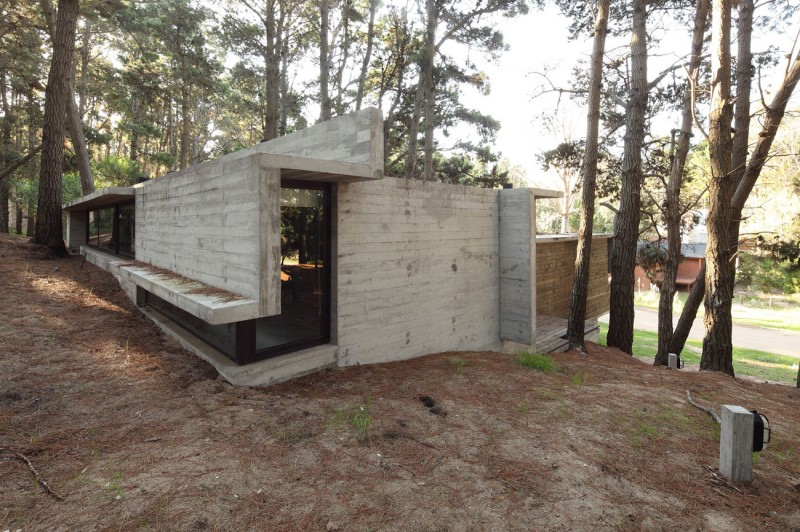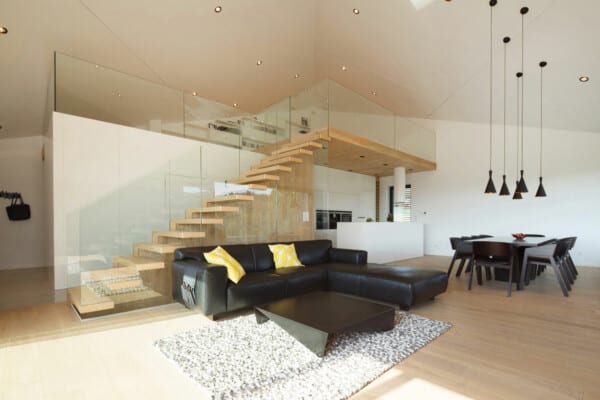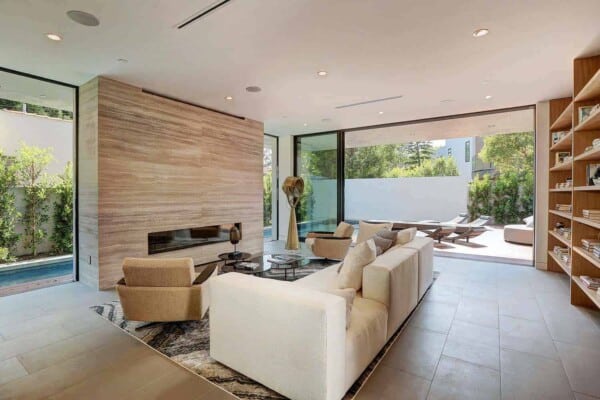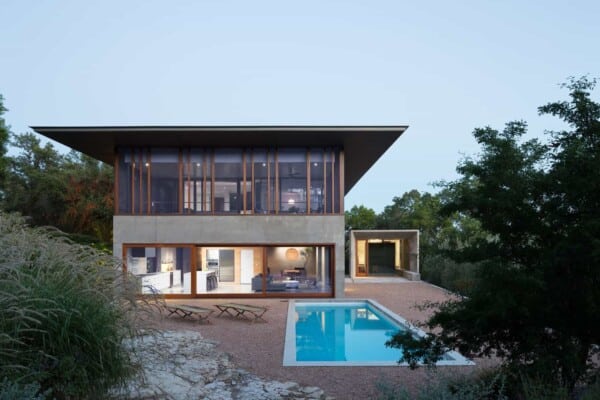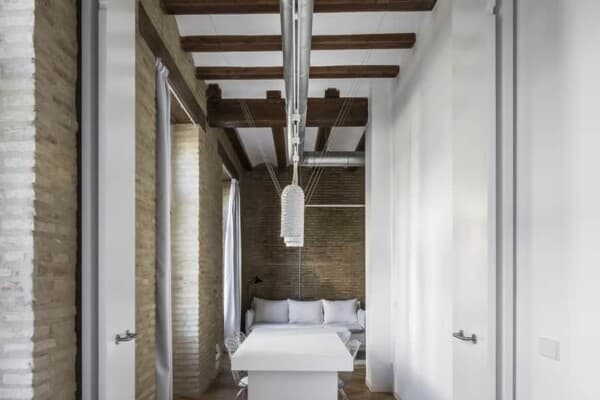Maria Victoria Besonias and Luciano Kruk of BAK Architects designed this contemporary house in the forest of Mar Azul, Villa Gesell, Buenos Aires, Argentina.
It is a 2011 project measuring 1,236 square feet.
Casa BB by BAK Arquitectos:
“Site:
The plot of 20m x 30m located in the forest of Mar Azul has the particularity of a very important gap on the two streets it faces, and while this complicates the resolution of access to the site, offers the advantage that if the house stands high, there is very little exposed to the looks from the street and also from the inside can get views of the landscape above the neighboring buildings. This difference in level is more or less soft to the back of the lot but is very abrupt and opposite forward in this area is also thinned the forest
The Commission:
The order of the principal was a three-bedroom house that did not exceed 120m2, designed to be used not only in summer but at different times throughout the year. In particular it noted the need for the master bedroom was generously sized, to count with a private bath and enjoy a certain independence from the rest of the house. The other two bedrooms share a bathroom could be general and minimum surface so as to give the social area as much space available. The kitchen (a very important space for the principal) should be fully integrated into this area and was especially highlighted the need for generous outdoor expansions. It also required a deposit to the saving of different elements for sports on the beach.
With respect to formal requirements, but asked for a concrete home is an aesthetic and constructive proposal similar to the other houses built by the studio in Mar Azul, this commission gave permission to try any particularizara search experience.
The Proposal:
The permit of the principal expressed in the phrase “may risk proposing a variant of the houses built,” and in the particularity of the lot and the required program, lies the uniqueness of this house. The search for formal variants was not easy because it does not involve change of technology, nor conception of spatiality (that I am more than clear in the first talks) but it was about making any new contribution without giving up those premises. The proposal could have been tested with new textures of concrete even with the addition of pigments but all these procedures seemed to contradict an austere position, not aesthetic of architecture.
The solution came by chance to notice that in the production process of the works of exposed concrete is an important remaining wooden planks used to make the formwork. It seemed so interesting, and also conducive to aim to use all resources available, reuse these tables in the execution of some wooden walls. This is how we think the project was based on replacing some exterior and interior walls by walls of concrete tables and wooden structure.
In relation to the volumes the house resolved as two prisms, at different heights and angles to each other, united by a staircase that bridges this gap and located among the pines in the upper area of the lot. In volume parallel to the direction of the slope were located collection activities of the family group plus the two small bedrooms with one side and the other half buried in a situation of a balcony. The volume perpendicular to the slope enjoys proximity of the foliage of the pines that rise from the ground and he placed the master bedroom with bathroom and terrace.
The Functional Organization:
Using a ladder hidden in the natural steep dune accessing the main volume by a terrace that develops along the longest side of the same, so that by opening the sliding carpentry full integration is achieved between the inside and outside. This housing sector consists of the package home and general bathroom separates the social from the two small “bedroom cabin” and marks the beginning of the soft descending stairway leading to the master bedroom in a very reserved. From this environment are seen in high, screened by walls of concrete and foliage of the pines, the forest surrounding the house. You can also go outside through a small terrace with steps made of link the two volumes that make up the house. Under the master bedroom is located the tank with access from a street.
The outdoor activities were raised following the principle of “scatter on the ground” so that their impact is as small as possible: thus pose a grill and a concrete table and benches at the top of the lot with views of the environment and shower in the manner of sculptural object in the lower zone of the same.
Construction:
The house is constructed of three basic materials: exposed concrete, glass and table tops and pine. The exterior walls made from this material were protected with burning oil. This seemed the most appropriate finish for easy maintenance of pine and to harmonize with the colors of the forest.
The slabs of different partitions and volumes supported by concrete beams and are completed with a minimum slope to produce rapid runoff of rainwater. H21 was used concrete with the addition of a fluidizing to this mixture with low quantity of water to harden, resulting in very compact and requires no sealing. The few interior walls of hollow bricks are finished in concrete screed, floor cloths is also divided by concrete screed plates of aluminum. The openings are of dark bronze anodized aluminum. The heating system, since there is no natural gas in the area, was resolved with a system that combines a home, bottled gas stoves and electric stoves.”
Photos by: Gustavo Sosa Pinilla


